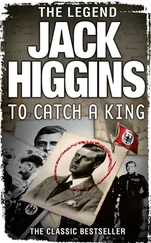The fall of Bridgwater was part of a summer of heavy Royalist losses. After the worst of these, at Naseby, the king wrote a letter to his eldest son from Hereford. It contained a handful of strict instructions that were to remain secret unless the prince’s closest advisers absolutely needed to know them. Until that moment, the letter’s contents must remain between father and son.
The defeats continued into the autumn of 1645 and beyond. After the surrender of Bristol in September, the young prince was forced to move ever westwards, the demoralised Royalist forces in Devon no match for the rampant New Model Army. Bad luck played a small part in bringing forward the Crown’s inevitable downfall in the county. At the siege of Tiverton in October, a cannonball struck and severed the chain holding up the garrison’s drawbridge, sending it thudding to the ground in slack-jawed surrender. At the battle of Torrington, in February 1646, a spark found its way into a church where the king’s men had stored eighty barrels of gunpowder. The huge explosion that followed brought an end to the engagement, as well as to the lives of the Parliamentary prisoners being held in the church. Now the remaining Royalists withdrew from Devon to Cornwall, the most westerly county on the English mainland.
Lord Colepeper, one of Charles I’s leading advisers, warned that, with nowhere else to go, the prince had now entered ‘a very Cornish mousetrap’.6 The king sent instructions for his son to be taken to France for safety. Hyde and the prince’s other advisers questioned the call, though, claiming that abandoning England for another country would become ‘an argument against his Majesty’s sincere intentions’.7 They put forward the alternatives of the Scilly Isles or Jersey, both Crown dominions.
After continued pressure from the enemy Prince Charles was forced to abandon the English mainland. He sailed on the Phoenix to St Mary’s, the largest of the Isles of Scilly, landing there on 4 March 1646. This was only thirty miles from Cornwall, but Parliament’s dominance of the seas meant it was low on supplies, no food having reached it from England for six weeks.
Lady Fanshawe, the heavily pregnant wife of one of Charles’s retinue, noted on arrival: ‘Meat and fuel, for half the court to serve them for a month, was not to be had in the whole island. And truly we begged our daily bread of God, for we thought every meal our last.’8 The king’s followers grew sick of the taste of salted fish, one of the islanders’ main products.
St Mary’s was soon realised to be as militarily vulnerable as it was poorly provisioned. Despite the recent arrival of 300 Irish troops, the garrison was unable to defend the sprawling coastline. Lord Colepeper was sent to France to tell Henrietta Maria that reinforcements must be sent immediately.
Parliament, aware of the prince’s vulnerability in his new island surroundings, tried to lure him into captivity. A silky letter was delivered by a rebel trumpeter in early April:
Sir,
The Lords and Commons assembled in the Parliament of England, being informed that your highness is lately removed into the Isle of Scilly, have commanded us, in their names, to invite you to come forthwith into their quarters; and to reside in such place, and with such council and attendants about you, as the two houses shall think fit to appoint.9
Charles waited, and then composed a reply laced with equal insincerity. He thanked his enemies for their kindness, and promised to continue to correspond with them, adding how much he looked forward to any further advice that they might choose to send him.
It was inevitable, the prince’s advisers realised, that Parliament would now attack St Mary’s, to seize Charles and take him to England as a prisoner in all but name. Even before they had got round to sending the prince’s reply, a fleet of two dozen ships had been dispatched to the Scilly Isles under Vice-Admiral William Batten, with instructions to bring him in. With Batten went Colonel Thomas Gollop, a Royalist who had recently surrendered the island and castle of Portland to Parliament. Gollop had promised his captors that he would help deliver the prince into their clutches.
As soon as Henrietta Maria learnt from Colepeper the danger that her son was in, she wrote to Hyde stressing her great concern at the inadequacy of the Scilly Isles as a safe haven for the talisman of the Royalist cause: ‘I need not remember [remind] you of what importance to the king, and all his party, the safety of the prince’s person is. If he should fall into the rebels’ hands, the whole would thereby become desperate.’10 Not for the last time, Charles’s freedom would be inextricably linked to any future hopes that the Royalist cause might cling to in the face of humiliating setbacks.
It was at this point, with his liberty and life in real danger, that Charles produced the letter his father had sent to him from Hereford ten months earlier. He realised that its terms were precisely relevant to the peril he now faced. In the letter the king had insisted that Charles must never surrender on dishonourable terms, or do anything to undermine the concept of regal authority. This must be the case even if his father’s life (or his own) were at stake. Equally, the prince must not risk death, because on him rested the future hopes of the Crown. It was clear that the preservation of Charles’s life was the priority now, with the enemy closing in fast.
When the Parliamentary fleet sent to capture the prince on St Mary’s was scattered in a timely two-day storm, Charles took the opportunity to flee to Jersey. He arrived there on 17 April 1646, as the sun was going down, the pilot of his frigate mistakenly steering a course that would normally have guaranteed shipwreck. The royal party was luckily spared, thanks to an abnormally high spring tide covering the rocks below. ‘God be praised,’ Lady Fanshawe wrote, ‘his Highness, and all of us came safe ashore through so great a danger.’11
It was a silent entry into the harbour. There was no salute of cannon fire, from land or sea. Everyone knew that this visit, far from being part of some triumphant royal progress, was instead uncomfortable proof that the king’s cause in England was in a calamitous state. Charles was coming to Jersey as a forlorn refugee.
But the largest of the Channel Islands was a relatively safe place for him to find himself in. Jersey had a good-sized Royalist force, and a network of established defences. The granite Mont Orgueil Castle, on the east coast, had been the site of fortifications since Roman times, and the two wards of Elizabeth Castle, which Sir Walter Raleigh had improved while Jersey’s governor at the start of the century, added solid assistance from their rocky islet. There was a further tower at the entrance to St Aubin’s harbour that had recently been freshly fortified, and half a mile off the coast of Guernsey, Castle Cornet stood in distant support.
Sir George Carteret, from the ancient Jersey family of de Carteret, was the island’s bailiff and lieutenant-governor. Samuel Pepys described this larger-than-life character as ‘the most passionate man in the world’. It was a world that Carteret, a seafarer since boyhood, had seen plenty of. Before the Civil Wars he had served with distinction against the Barbary pirates of North Africa, rescuing Christian captives from Salé in modern-day Morocco. In 1643 Carteret captured Jersey for Charles I, ejecting the island’s Parliamentary garrison within a month of landing. Two years later, by now a Royalist vice-admiral, he was knighted. Soon after Prince Charles’s landing on Jersey Sir Edward Hyde noted that Carteret was perhaps ‘the best seaman of England’, and certainly ‘a worthy and most excellent person, of extraordinary merit towards the crown and nation of England’. Carteret was determined to keep the prince safe.
Читать дальше












